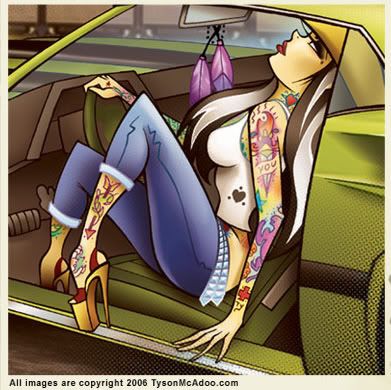The Barker chapter 9, specifically the writings of Julia Kristeva, will
appropriately assist in my response paper because I will be discussing
the twenty-first century hurdling itself beyond the traditional roles of
our sexes and teachings by patriarchs such as Freud. Barker states that
"Kristeva's work is centrally concerned with signs/semiotics, that is,
with the symbolic order of culture." (Barker 296) I can not help but
relate this to our discussion on Breakfast at Tiffany's, well more so,
the suggestion that Miss Golightly is really a man.
We, as readers, assume the use of female signs: makeup, wordage, dress,
etc. all indicate the signifier to be for the female, yet by Saussure's
account, the reader "assume(s) that the linking of a name and a thing
is a simple operation - an assumption that is anything but true"
(Saussure 78) When reading BaT, we assume that because Capote says
"she" than what he meant was a female by nature and not her own
invention or inclination. Why does Holly ask the narrator if he knows
any good lesbians for her to room with, maybe in this regard the
narrator is actually a woman.
It also reminds me of a show that I often watch and listen to on the
radio; The Rachel Maddow show. She is a
lesbian and opts for the more traditional
masculine features - short hair, pants and
button-down shirts, minimal (if any) make-
up - but more than that, she discussed an
encounter with a makeup artist. The makeup
artist curled her eye lashes and she felt as if
she had "spiders" on her eyes. She was
predominantly on the radio so makeup was not
a necessity. After her brief co-hosting on MSNBC,
she gained her own show and a thicker face of
makeup. It's funny to see her pictures before the
TV show and the after effect. Her eyes have become
more made-up and highlighted by liner and
eyeshadow, only too because she is signified as woman.
Fascinating!
Collaborative Film Presentation Groups
9 years ago


